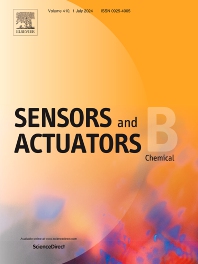Journals in Analytical chemistry
Journals in Analytical chemistry
- ISSN: 0165-2370
Journal of Analytical and Applied Pyrolysis

- ISSN: 0021-9673
Journal of Chromatography A

- ISSN: 1570-0232
Journal of Chromatography B

- ISSN: 0731-7085
Journal of Pharmaceutical and Biomedical Analysis

- ISSN: 0946-672X
Journal of Trace Elements in Medicine and Biology

- ISSN: 0026-265X
Microchemical Journal

- ISSN: 1773-035X
Revue Francophone des Laboratoires

- ISSN: 0924-4247
Sensors and Actuators A: Physical

- ISSN: 0925-4005
Sensors and Actuators B: Chemical

- ISSN: 0584-8547
Spectrochimica Acta Part B: Atomic Spectroscopy
